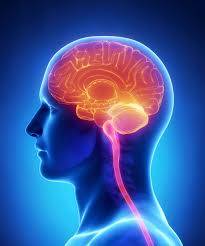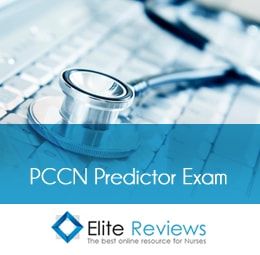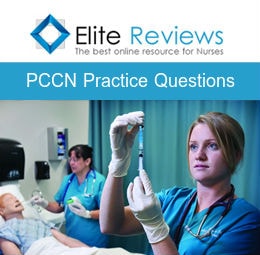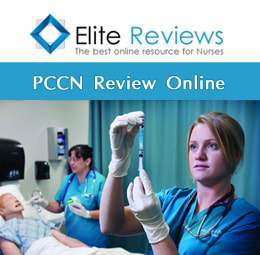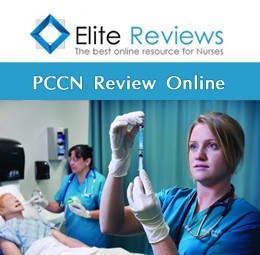PCCN Neurology Exam Overview
PCCN Neurology Exam Overview
The Neurology portion of the PCCN exam will include roughly 20 questions or more. This is a fairly large portion of the exam. It is very important that you have a really good grasp on the particular section of the exam. The Cardiac, Pulmonary, and Neurology is the bulk of the PCCN exam. In this article, we will cover some of the content on the Neurology portion of the PCCN exam, Neurology Anatomy and Physiology, AV Malformation Overview and some of the PCCN Neurology practice questions that we have embedded in our PCCN Online Course and PCCN Question Bank.
PCCN Neurology Exam Outline
- Aneurysm, AV Malformation
- Encephalopathy
- Head Trauma, Skull Fractures
- Intracranial/Intraventricular Hemorrhage
- Neurologic Infectious Diseases
- Seizure Disorders, Stroke
Neurology Anatomy and Physiology
The nervous system is the part of an animal’s body that coordinates its voluntary and involuntary actions and transmits signals to and from different parts of its body. The nervous system consists of 2 main parts; the central nervous system and the peripheral nervous system. The CNS contains the brain and spinal cord. The PNS consists mainly of nerves, which are enclosed bundles of the long fibers or axons, that connect the CNS to every other part of the body.
The autonomic nervous system is divided into the sympathetic (SNS) and parasympathetic nervous systems (PSNS). The SNS is activated in cases of emergencies to mobilize energy, while the PSNS is activated when organisms are in a related state. The enteric nervous system functions to control the gastrointestinal system. Both autonomic and enteric nervous systems function involuntarily. Nerves that exit from the cranium are called cranial nerves while those exiting from the spinal cord are called spinal nerves.
PCCN Neurology Exam Practice Questions
1) A patient with a traumatic brain injury (TBI) has just been admitted after resuscitation in the emergency room department. Which of the following initial studies should the nurse anticipate in this patient?
A) Magnetic resonance imaging (MRI) of the brain
B) Computed tomography (CT) scan of the head
C) Lumbar puncture (LP)
D) Cerebral angiography
2) A patient presents with new-onset seizures. Diagnostic imaging reveals a 4 cm right posterior frontal arteriovenous malformation. In planning this patient’s nursing care needs, which of the following conditions should the nurse anticipate?
A) Left-sided weakness
B) Receptive aphasia
C) Left homonymous hemianopsia
D) Sensory deficits on the right face and arm
3) A patient admitted last night with subarachnoid hemorrhage returned from the operating room 4 hours ago following aneurysm clipping. On admission, the patient was assessed as a Hunt and Hess Grade II. The patient now appears to be stuporous with significant left hemiparesis. The nurse should
A) Note that this is consistent with the Hunt and Hess appraisal at admission
B) Contact the neurosurgeon to communicate the examination findings
C) Adjust IV infusion rate because the aneurysm may have rebleed
D) Prepare for ventriculostomy insertion by the physician so hydrocephalus can be treated.
4) During report, the nurse is told that a patient with an intracranial hemorrhage has GCS values of 3 – 3 – 4. Evaluation of the patient’s progress is based on the nurse’s knowledge that this patient
A) Opens his eyes when spoke to
B) Follows simple commands
C) Makes no attempt to remove noxious stimuli
D) Makes no attempt to vocalize
5) A 25 y/o admitted patient has a generalized tonic clonic seizure. After the seizure has subsided, the nurse expects the patient to exhibit which of the following as a characteristic behavior after a seizure?
A) Restlessness
B) Lethargy
C) Automatisms
D) Incontinence
PCCN Neurology Exam – Sample Questions Answer with Rationale
1) Correct Answer – B) Computed tomography (CT) scan of the head
- Rationale – CT scan of the head is useful for looking at bone and blood and is the best imaging study to view most intracranial processes, including trauma, intracerebral hemorrhage, and hydrocephalus.
2) Correct Answer – A) Left-sided weakness
- Rationale – The location of the AVM suggests which deficit the nurse needs to anticipate. A lesion in the right frontal area would be expected to affect voluntary motor control on the left side of the body. Comprehension of spoken language.
3) Correct Answer – B) Contact the neurosurgeon to communicate the examination findings
- Rationale – The patient is now a Hunt and Hess Grade IV, a substantial deterioration compared to the initial Grade II (Grades range from I to V, with Grade I identifying alert patients with mild headache and stiff neck and Grade V identifying patients in coma. The most appropriate action would be to notify the neurosurgeon, who may request a head CT scan or angiography.
4) Correct Answer – A) Opens his eyes when spoke to
- Rationale – The GCS is an internationally recognized standardized assessment tool that evaluates level of consciousness, the most sensitive indicator of cerebral function. The patient’s best responses in three areas, eye opening, motor response, and verbal response.
5) Correct Answer – B) Lethargy
- Rationale – Typical postictal behavior includes confusion, lethargy, HA, and somnolence. The patient will usually sleep for an extended period following a seizure.
PCCN National Exam Courses
Overview
- Elite Reviews Offers A Variety Of Online Courses That Will More Than Adequately Help Prepare The Critical Care Nurse To Pass The National Exam.
- Each Course Includes Continuing Education Credit and Sample Questions.
Continuing Education
- Each Of Our Online Courses Has Been Approved Continuing Education Contact Hours by the California Board of Nursing
- Login To Your Account In Order To Access The Course Completion Certificate Once The Course Is Complete.
PCCN Free Trial
- FREE Sample Lecture & Practice Questions
- Available For 24 Hrs After Registration
- Click The Free Trial Link To Get Started – PCCN Free Trial
How It Works
How The Course Works
- First – Purchase The Course By Clicking On The Blue Add To Cart Button – You Will Then Be Prompted To Create A User Account.
- Second – After Creating An Account, All 3 Options (90, 120 or 150 Days) Will Be Listed. Select The Option You Desire And Delete The Other Two.
- Third – You Will Be Prompted To Pay For The Review Using PayPal – After Payment You Will Be Redirected Back To Your Account.
- Last – Click The Start Button Located Within Your Account To Begin The Program
- 125 Prep Questions
- Q & A With Rationales
- Approved For 5 CEU’s
- 90 Days Availability
- Cost $75.00
- 1250+ Prep Questions
- Q & A With Rationales
- Approved For 25 CEU’s
- 90 Days Availability
- Cost $200.00
PCCN Practice Questions Bundle
- 1350+ Prep Questions
- Q & A With Rationales
- Approved For 30 CEU’s
- 90 Days Availability
- Cost $225.00
PCCN Review Course
- Option 1
- Lectures & 1250+ Questions
- Q & A With Rationales
- Approved For 35 CEU’s
- 90 Days Availability
- Cost $275.00
- Option 2
- Lectures & 2000+ Questions
- Q & A With Rationales
- Approved For 40 CEU’s
- 90 Days Availability
- Cost $325.00
PCCN Review Course Bundle
- Option 3
- Lectures & 3000+ Questions
- Q & A With Rationales
- Approved For 70 CEU’s
- 90 Days Availability
- Cost $375.00

